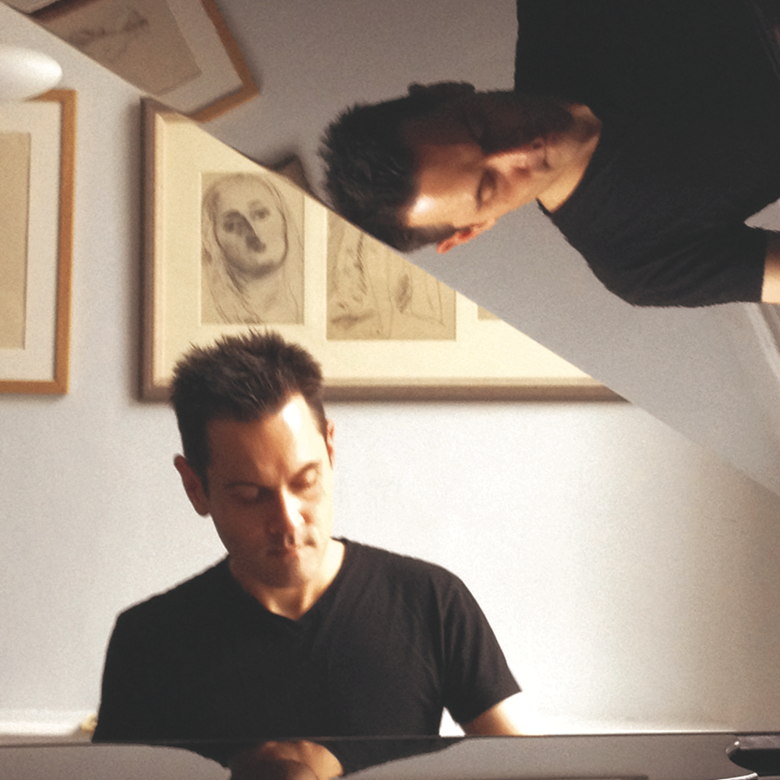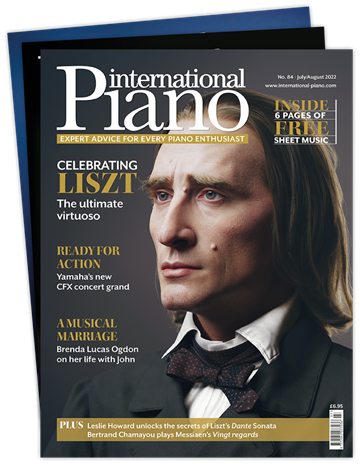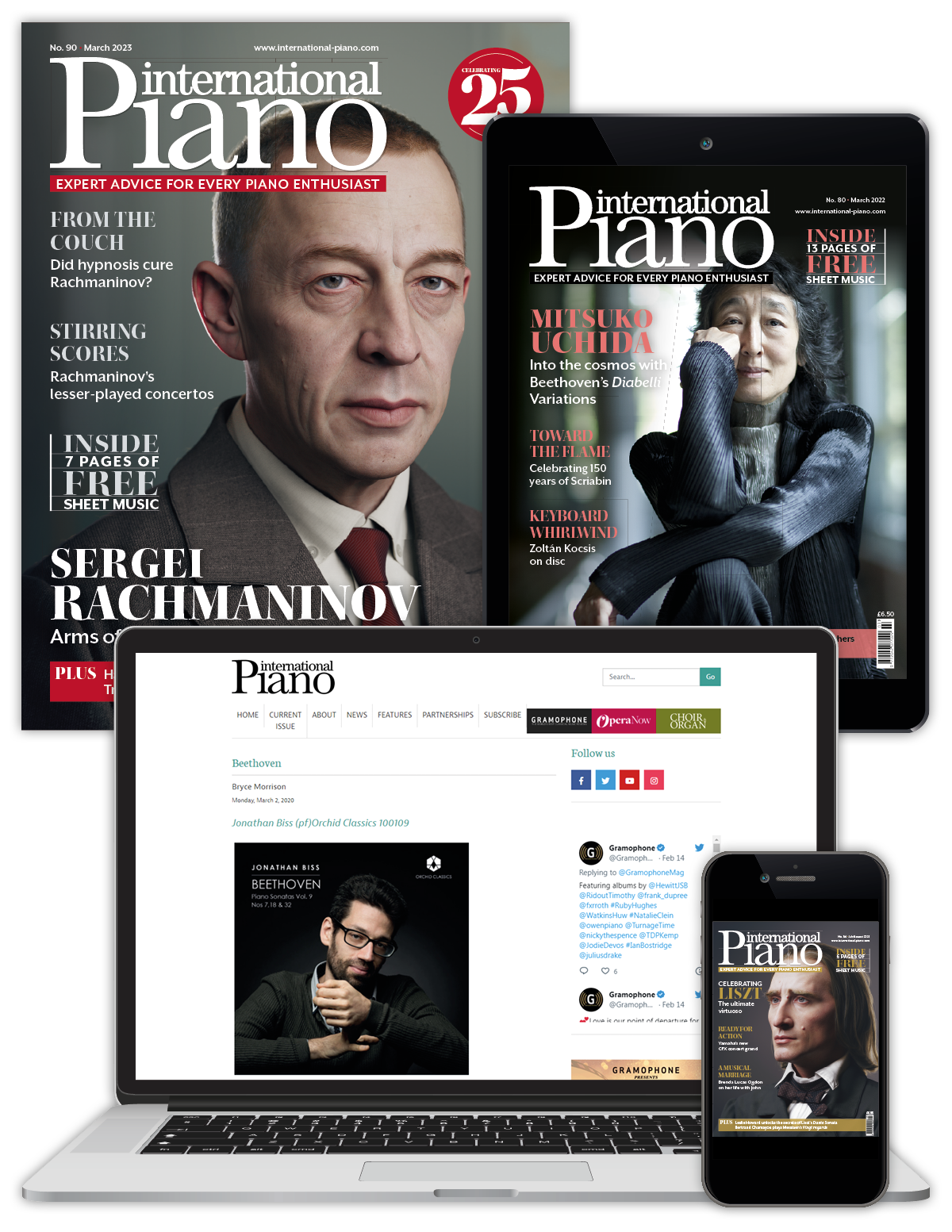Daniel-Ben Pienaar on recording Haydn's complete piano sontatas
Daniel-Ben Pienaar
Tuesday, November 14, 2023
Daniel-Ben Pienaar introduces his recorded cycle of 48 Haydn piano sonatas, which casts fresh light on the composer’s musical style and personality

The cycle as an idea is very important to me. I see every cycle as a self-contained world where one can identify a set of ideas to explore paradigmatically, comparing like with like across the whole set of works – over and above taking what’s on the page at face value and enlivening it.
In the case of Haydn’s sonatas, I decided to trim the early works we find in ‘complete’ editions down to those that are definitely by him or most probably by him. Maybe even Haydn himself ended up not remembering what he had written when he was young! And there’s some evidence that suggests he was happy to have pieces attributed to him if they brought in money. So a cloud of scholarly doubt hangs over the early works of up to around 1765.
We definitely know that four of these sonatas are by Haydn because they appear in his 1765 ‘Draft Catalogue’ alongside seven sonatas that are now lost. I started my cycle with these four, which give a nice snapshot of Haydn when he was still building his craft. Although not a prodigy in the Mozart sense, Haydn was of course prodigious in his own way. One has a sense that he turned up every day and put the work in. There is a kind of iterative process where he is constantly building on what he has done before at the same time as keeping an astonishingly open mind as to what he allows himself to explore and experiment with. The collective achievement ends up being truly astounding.
I present nine further early sonatas presumed to be by Haydn by way of an addendum, on the last CD, so that if a listener listens from disc 1 onwards they get to the beautifully accomplished works from 1765 to 1772 quite quickly. The rest of the cycle is presented chronologically by date of original publication. My aim has been to present a clear view of the cycle and what it contains, within which one can then freely speculate about what Haydn might or might not be, what he might be on the modern grand, what he might be to us now. And inevitably there are performance-practice questions, the answers to which will hugely affect the overall impression the cycle leaves from that of one performer to the next.
I expect some listeners might hear my Haydn as ‘straightforward’, particularly because I rarely ornament during repeats. That is in part because I mostly omit second-half repeats in sonata-form movements, in part because I find the ornamentation most modern players come up with rather tawdry, especially on repeated listening. Haydn’s own pen is always just that much sharper – after all, we don’t spend a lifetime ‘being’ Haydn! The only times where I add something significant are on the few occasions where the score demands a little cadenza.
My focus instead is on (micro-)details of nuance, gesture, accentuation, tactus and touch – tools that, used together creatively, form a web of complexity that tells you more about a performer’s mind and aesthetic than any obvious interpretative decisions. The people who notice my use of these tools tend to find my playing rather ‘interventionist’! But then my aim has never been to create a kind of mediated, Goldilocks version of the works I play. Rather Marmite than vanilla …
Rhythmic drive and forward intensity are key personal values for me. The underlying rhythmic trajectory of Haydn’s music is quite long, and I deem it important to retain a sense of that in my body even as I relish all sorts of opportunities for spontaneity along the way. I think that is the secret to making the emotional undertow of the music palpable.
Haydn sets up all kinds of odd asymmetries and incongruities in longer movements that make us curious about how they will be resolved. This creates tension. He is also a master of ‘register’ in the sense of what the expected ‘tone’ is in a given situation – how one is supposed to behave, as it were. He is constantly playing games that might be lost on many players and listeners today.
I had only played five of Haydn’s sonatas before starting this project in 2020, between the UK’s two Covid lockdowns. I had always had Haydn’s complete sonatas on my shelves, but it was only in July 2020 that I picked them up after a walk with a friend through the deserted streets of the City of London. Reading through at the piano took me a day or two, after which I straightaway read through them all again. On the third read-through I put in the necessary fingerings and started to form concrete ideas about tempos and character. It all felt like a strange but also magical homecoming, having previously recorded the sonata cycles of Schubert, Beethoven and Mozart.
I started recording at the end of the summer, at the Royal Academy of Music in London. The Academy’s Angela Burgess Recital Hall is fitted with a single pair of omnidirectional mics that are pretty good – so I just positioned the piano in the best way I could and played and played, without an engineer or producer. I got permission to access the building overnight, and I tended to work on Saturday nights. I would record about one CD’s worth of music on each of these nights, spending altogether eight nights between September and December. It then took me about five weeks to choose takes and edit everything (I always edit my own work). It was especially important for me that everything should remain ‘fresh’ and that I should capture a feeling of making music for myself, allowing myself to be surprised by Haydn’s music, and exploring in the way I do every day at the piano – thus working in an intimate hall, on my own, and using the simplest means of recording.
The combination of elements in Haydn’s music strikes me, perhaps more than anything, as rather mysterious. There is something one can’t quite put one’s finger on which makes it beautiful in a special way – very different from the totally disarming sensuality and emotion of Mozart.
Take the opening Moderato of the Sonata in C sharp minor (HobXVI:36, L49). A lot of it is rather severe and ungiving, but there’s also some real delicacy and a few yielding gestures; a couple of slightly perverse jokes too – all punctuated by silences, some comfortable, some not. It’s registrally disparate too, yet it all somehow adds up. When you listen again it starts to seem less off the wall, and by the third time you feel it has to be that way.
A lot of the writing is highly decorous, sometimes punctuated by moments of deeply personal tenderness that flourish out of nowhere and then recede. There are also things that are baroque, austere or rather plain. And then there are the ‘dad jokes’ and some rather camp humour, even passages that seem childish and amateur – and then suddenly not. And, yes, there many chances to play as fast as you can, where it would be a pity not to.
One of the richest strains in this cycle is the minuets. They cover the gamut from old-world grace, conventional formality or archness, through gentle sensuousness or extroverted passion, to being subversive or naughty, or outright funny. The variety is amazing, and it is a depressing thought that Haydn’s music is so often used to teach the so-called ‘Classical style’ to students in a sort of painting-by-numbers way, instead of all these many interesting modes of being.
Young pianists tend to focus on the more ‘famous’ sonatas, in particular the last eight or nine, with a smattering of earlier ones. For me it was so rewarding to explore the ‘middle’ works in depth, where there is an overt sense of experimentation, with so much to explore in the space between the notes. The later sonatas have a ‘through-composed’ feel that is completely satisfying, but there is so much that is quizzical and thought-provoking about the sonatas from 1765 to 1780. Haydn’s published sonatas mostly catered to a domestic market, but one must not forget that some of these amateurs were extremely gifted. Of course, being a virtuoso means more than commanding a well-oiled mechanism and musicality. It is much more rare to find pianists who are true masters of timing, characterisation and idiom.
Every album of mine has been a kind of experiment in avoiding the glossiness that seems almost de rigueur nowadays when it comes to recorded sound. The question to ask is: what are we trying to achieve with recorded sound? Are we just evoking a space? As a listener I don’t really want to be transported to an empty concert hall. And it is important to engage the imagination of the listener – does the recorded sound allow that to happen? It feels to me that the mind is better at filling in some ‘gaps’ in audio information than subtracting it in the case of unrealistic, excessive amounts of resolution and detail.
Recordings made over the past 100-plus years have become reference documents that can themselves spur new work. This has elevated the role of the performer. The idea of a performance as a preserved artefact could not have been part of the thinking of composers before the advent of recording. This is one of the principal things that puts classical music performance now in an anachronistic frame.
When we engage with ‘canonical’ works we are not just engaging with the works and the composer in their original setting; we are also engaging with their reception history, with the varied recorded performances of these works that sometimes ‘become’ the music as much as the notes on the page. Absorbing such a plurality of voices becomes, above all, a way of making sense of ourselves in the world now, of trying to understand how we got to where we are now.
Ultimately, I cannot be sure that my Haydn is ‘new’ or ‘original’. That is for others to judge. I had simply set myself the task of immersing myself in Haydn for four months – or rather, in many Haydns: the Haydn of his sonatas, trios, quartets and symphonies themselves, but also that of, for example, HC Robbins Landon’s five-volume biography, or the Haydn that musicologists Donald Tovey and Lawrence Kramer describe; or the Haydn of Lili Kraus, Vladimir Horowitz, Ivo Pogorelich, Ernst Levy and a host of other pianists; or that of the Beaux Arts Trio or Leonard Bernstein even! I can only hope that something of all of them shows itself in my recording.
Feature from September 2023 issue of International Piano
Interview by Owen Mortimer






